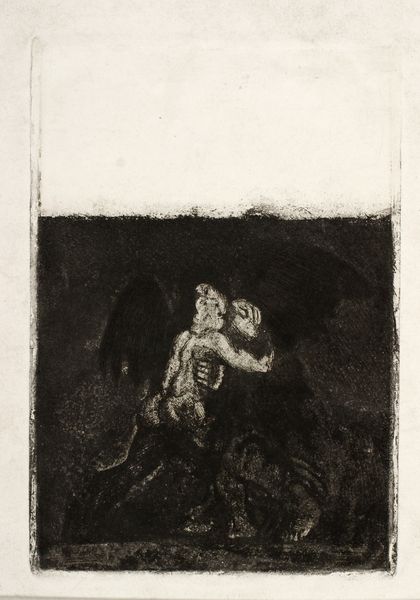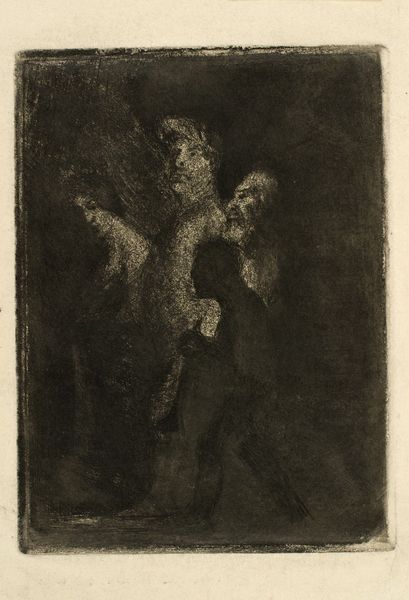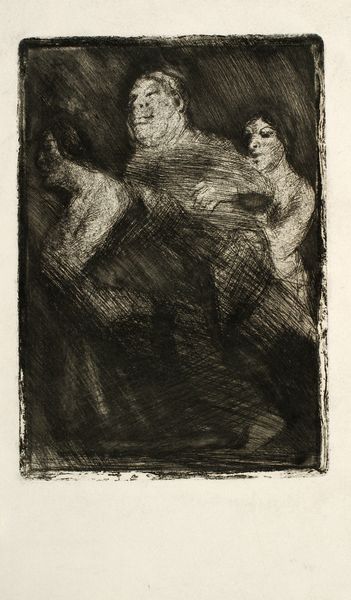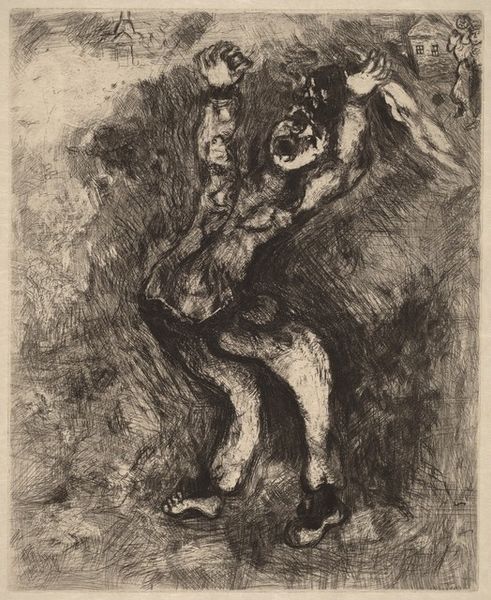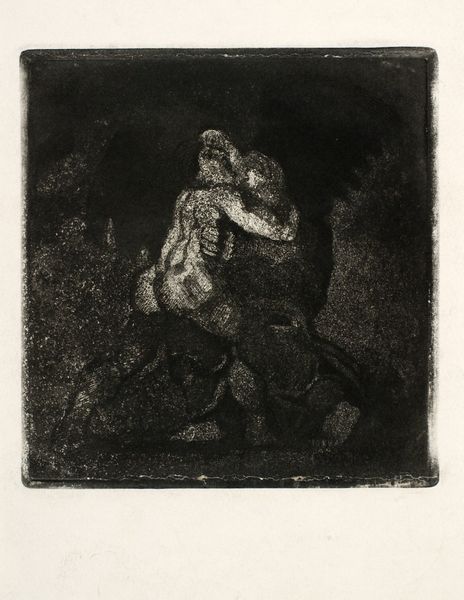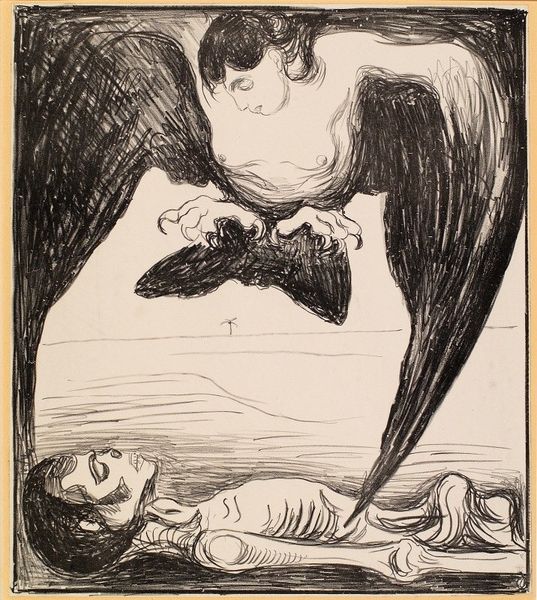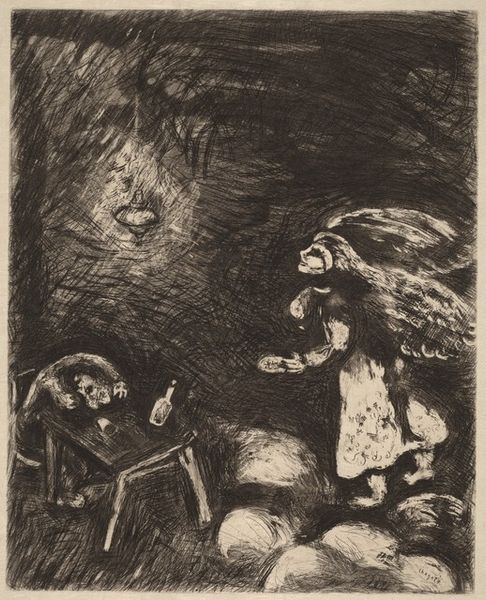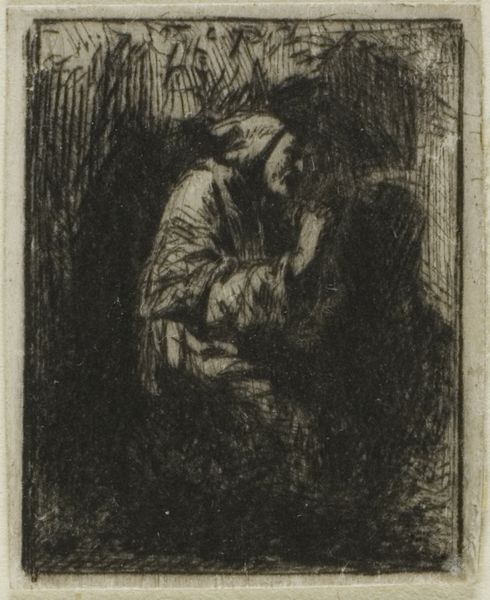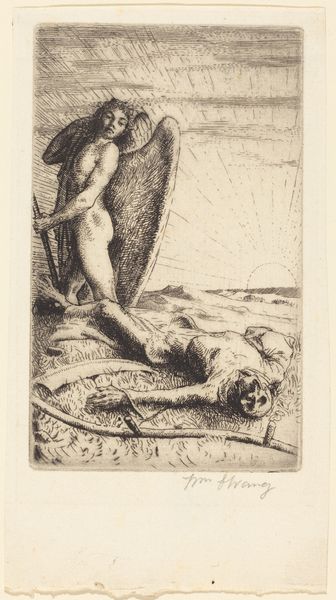
aquatint, print, etching
#
aquatint
#
narrative-art
# print
#
etching
#
figuration
#
symbolism
#
monochrome
Dimensions: 215 mm (height) x 148 mm (width) (plademaal), 140 mm (height) x 142 mm (width) (billedmaal)
Editor: This is "Jacob Wrestling with the Angel," an aquatint and etching by Oluf Hartmann from 1905. It’s incredibly textural; the figures seem to emerge from a dark, almost primordial soup. The struggle feels both physical and deeply spiritual. What strikes you most about it? Curator: I’m drawn to the socio-political context in which Hartmann created this piece. Symbolism, which heavily influenced Hartmann, offered a language to explore anxieties about modernity and faith in a rapidly changing world. This biblical scene allowed artists to grapple with doubt, struggle, and the search for meaning during this era. Does the composition of this work evoke that anxiety? Editor: Absolutely. The close framing intensifies the sense of conflict. It makes it very claustrophobic, as if we are right there in the struggle. The angel’s features are obscured; Jacob is really in the dark. Why would he use monochrome? Curator: The monochrome palette simplifies the visual field, directing attention to the thematic conflict instead. Consider that at the time, the institutions that could give value and notoriety to an artist’s work – the Salons, the art market – favoured realism and academic training. This stark contrast and reliance on internal psychological narrative reflects the Symbolist’s challenge to those dominant cultural forces. Do you see it as a subversion of dominant narratives? Editor: Definitely. The traditional interpretation of the story emphasizes Jacob’s eventual blessing, but Hartmann seems to linger in the moment of struggle itself, almost denying resolution. How might the art world have viewed a piece that seemingly questions divine order? Curator: It's quite a bold artistic and societal commentary for its time. Symbolism offered Hartmann a path to express personal, even subversive, ideas within a visual language rooted in established narratives. Editor: I hadn’t thought about the social implications of questioning faith so directly through subject matter. I’m struck by how deeply intertwined this work is with the era's anxieties about faith. Curator: It reveals how visual art serves not merely as representation but as an arena where cultural anxieties and belief systems contend.
Comments
No comments
Be the first to comment and join the conversation on the ultimate creative platform.
